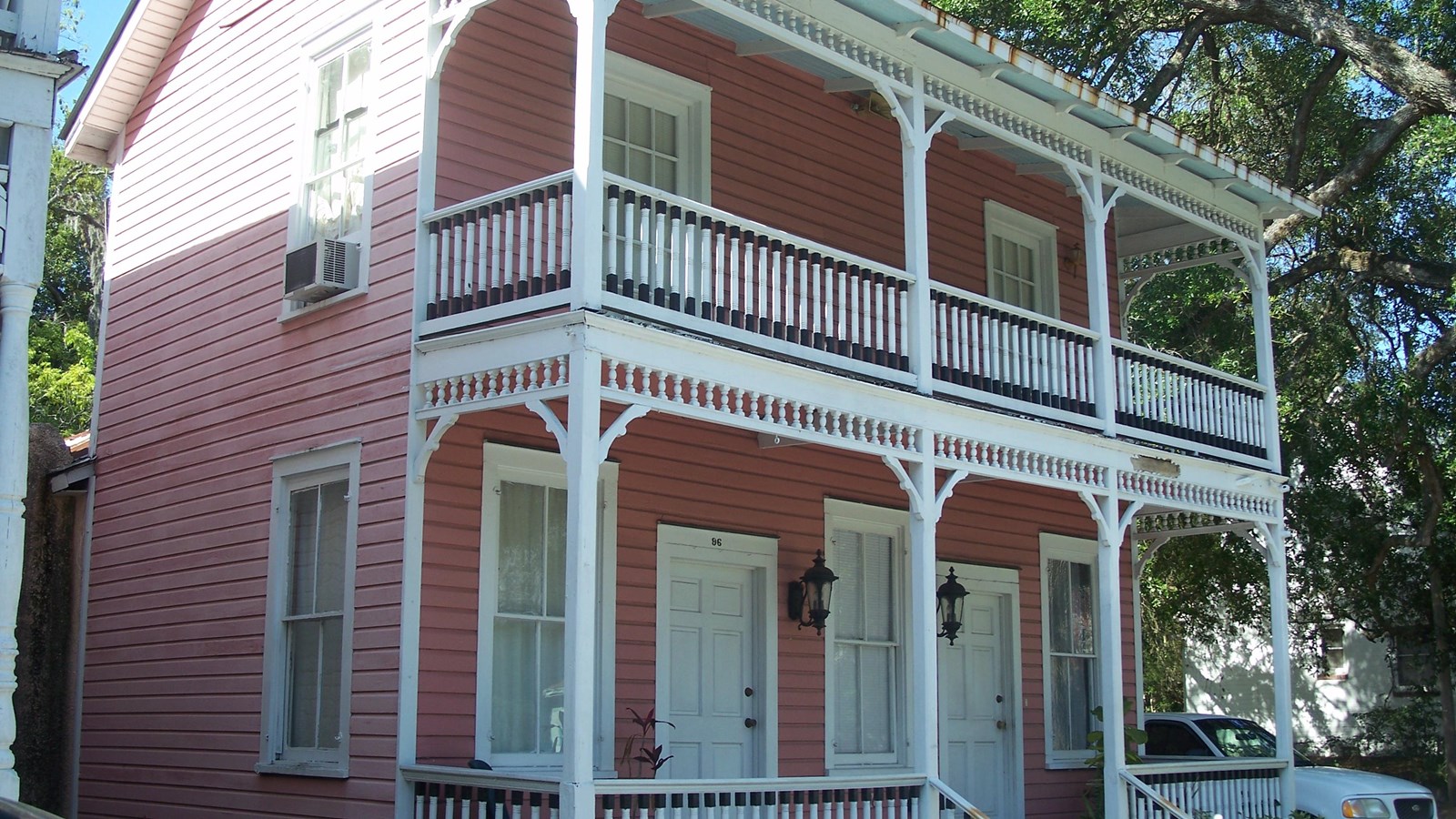Last updated: April 23, 2020
Place
Florida: Lincolnville Historic District

Photo by Ebyabe, CC BY-SA 3.0, https://commons.wikimedia.org/w/index.php?curid=3986339
St. Augustine, Florida, is the oldest city in the United States, and until 1964, one of the most segregated. A dentist and NAACP representative named Robert Hayling from the historic subdivision of Lincolnville initiated the protest actions that eventually ended discrimination in the old city. Lincolnville, established in 1866, was the major black residential subdivision in St. Augustine, and many of its residents were politically active. The historic district contains a large collection of 19th and early 20th century residences and churches.
In 1963, Hayling organized campaigns against local segregated public facilities catering to tourists. He also urged the White House not to support the 400th anniversary of the founding of St. Augustine set to take place in September 1965. When both efforts failed, he appealed to the Southern Christian Leadership Conference (SCLC) for help.
The SCLC called on New England universities to send volunteers to the city for March 1964 demonstrations and asked Lincolnville residents to provide food and lodging. By the end of one week of protests, police had arrested hundreds of demonstrators, including a delegation of rabbis and the 72-year-old mother of the governor of Massachusetts. White vigilantes terrorized local businesses that dared to serve African Americans.
In early June, Martin Luther King, Jr., came to St. Augustine and took part in a sit-in at Monson's Motor Lodge. The same month, the SCLC arranged for baseball star Jackie Robinson to address a civil rights rally in Lincolnville. The publicity surrounding these two events hastened Congress' passage of the Civil Rights Act on June 20, 1964.
Local segregationists initially refused to comply with the new Act. For example, when Monson's manager noticed African Americans in the motel swimming pool, he threw acid into the water, then drained the pool and stationed guards around it. Angry white mobs also beat "wade-in" demonstrators at local beaches as well as the police assigned to protect them.
The end of segregation in St. Augustine demonstrated that even the most closed communities could not uphold segregation in the face of determined resistance.
Visit the National Park Service We Shall Overcome travel itinerary to learn more about the civil rights movement themes and histories. Also, be sure to check out Civil Rights subject site.
